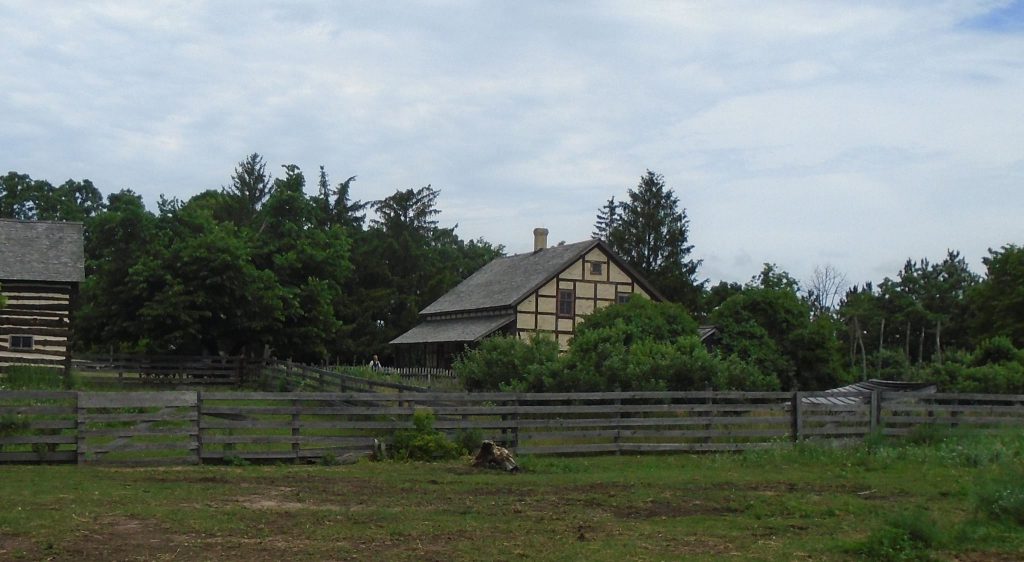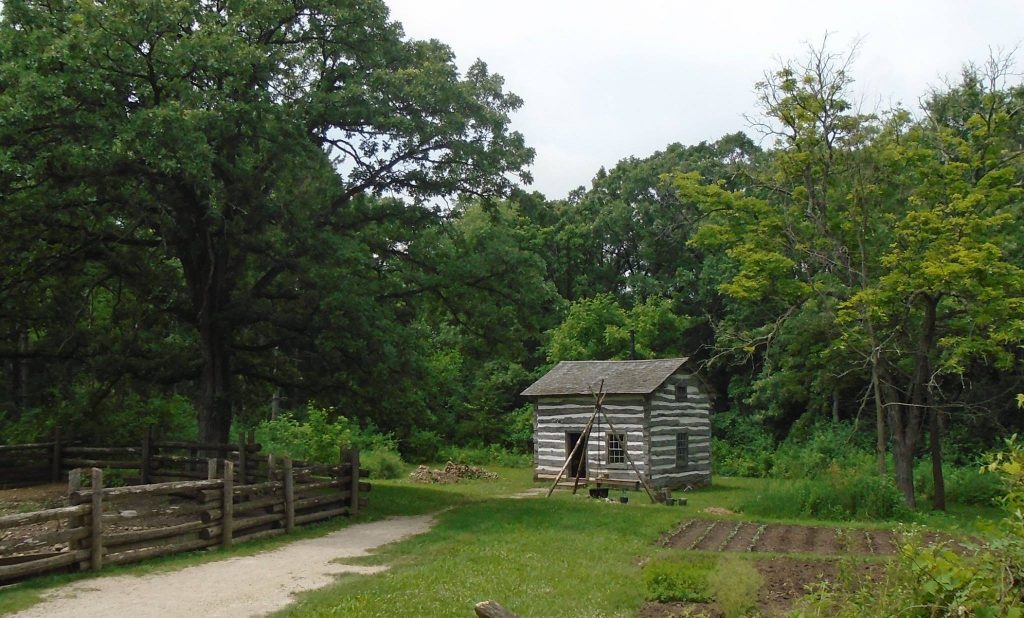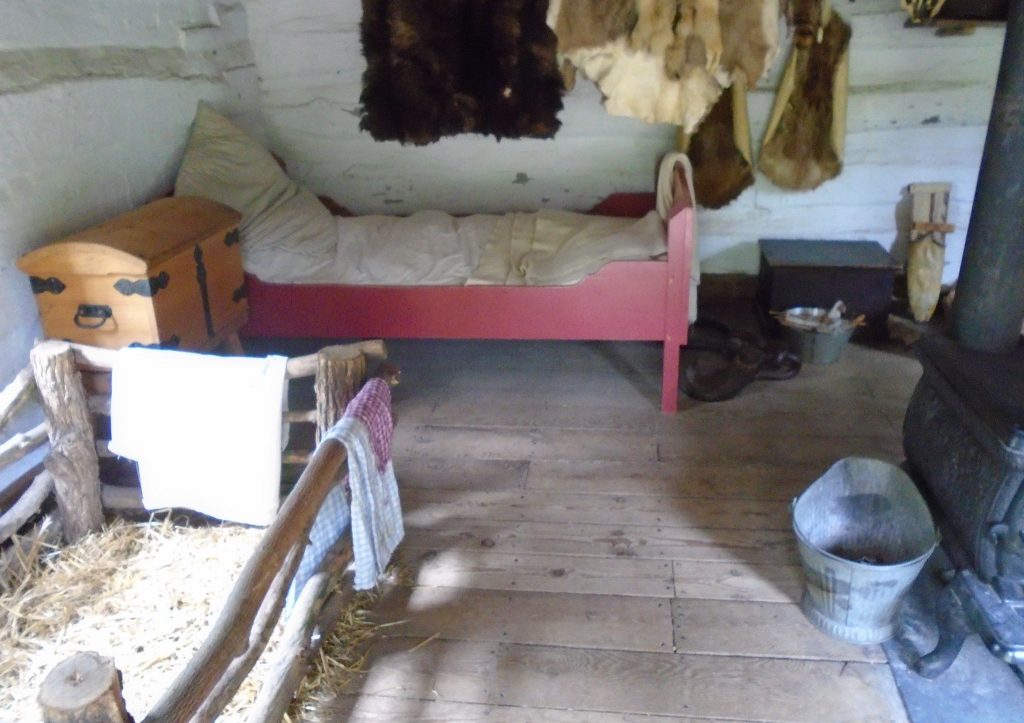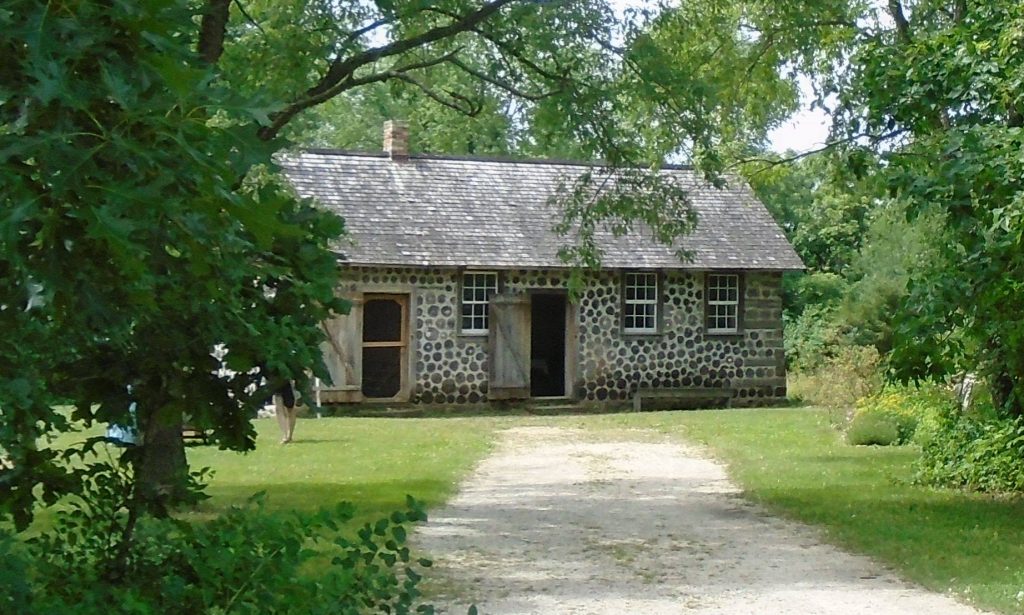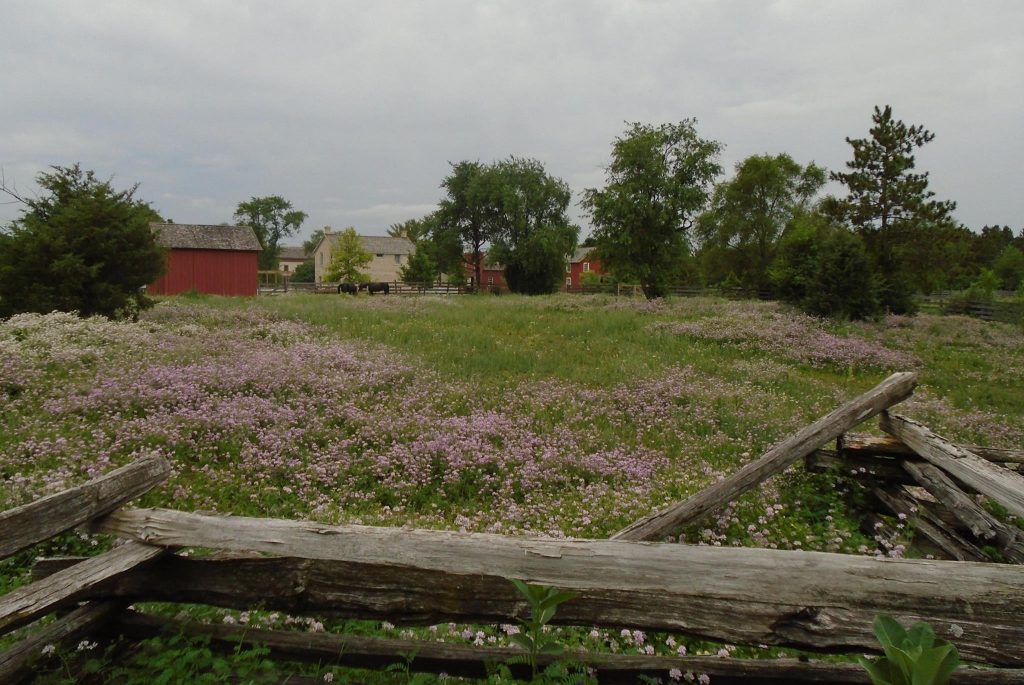Old World Wisconsin is an open air museum that shows daily life in Wisconsin immigrant communities in the 19th Century. The buildings were moved from various parts of Wisconsin and reassembled on site. There are reenactments who explain how things were done on the farm or in the forge.
Life was often very hard. Even the well-off had very little space. They worked hard all day and everybody was what we would call “food insecure” almost all the time. But they built America with all that hard work and sacrifice and hard as life was in America, it was better than what they left.
We often think of immigrants as urban. We can picture the neighborhoods of Italians, Irish or Chinese. In the 19th Century, however, most Americans lived on the land and most immigrants went directly to farms. Nature provided the discipline and the assimilation. They brought with them skills that improved life and productivity and despite their apparent isolation became integral parts of the American system. Americans were a practical people. They asked if the newcomers could do something useful. They new people usually could.
Wisconsin was really a land of immigrants in the 19th Century. The majority of the population was German at some points. (Wisconsin is the only state to have had a majority of one foreign nationality.) Other prominent nationalities included Norwegians, Swedes, Finns & Poles. They are represented at Old World Wisconsin.
Consider “assimilation”. To most people that means that the newcomers become like the host nationality. This happens, but it is not a one-way operation. The immigrants from the Old World created a new world Wisconsin, with its own particular culture.
Germans, for example, brought with them their belief in education and rule of law. Crime rates dropped and education improved when Germans moved in. They brought kindergarten (as the name implies) and the American university system was to a large extent build on German models, especially the land-grant universities. Of course, beer, brats and pretzels are among their prominent contributions.
My first picture is one of the German farms. Next is the Norwegian cabin outside and inn. They raised three kids in that little space, three kids and one pig each year, notice the pen. They spent a lot of time outside. Picture #4 is a Polish cottage. It is not build in a Polish stye. It is made of short logs put in sideways and cemented together. It used a lot of wood but was easy to construct. Last picture shows one of the fields. They have animals. You really could not have a living museum w/o farm animals.
They have craftsmen and farm animals at Old World Wisconsin. The blacksmith explained how they made tools and horseshoes. They kept the shop a little dark so that they could see the color of the hot metal to assess the temperature. He uses coking coal, which is hotter and makes less smoke. It does not conduct heat and you can touch the coal next to the fire w/o burning yourself.
The guy in the German section explained how they built houses. They did not use nails for the main construction. Instead they made pegs (as you can see in the photo) and fit the parts together. They started the construction in the woods, picking out the right trees. Home Depot had not yet opened.

